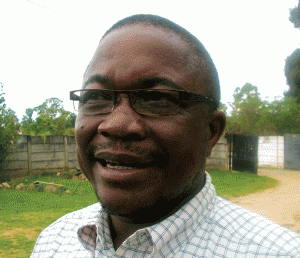Source: Poor rainfall affects crops | The Financial Gazette January 25, 2018

Wonder Chabikwa
THE crop situation throughout the country is fast deteriorating as the unexpected high temperatures have resulted in serious moisture deficits and below average crop establishment. As the season progresses, the country’s major food crop especially in regions III, IV and V, may soon be declared a write-off.
The situation on the ground shows that the country is unlikely going to achieve its set target of two million tonnes for maize and 150 000 tonnes for soya beans.
“Some of the crop in these regions has reached permanent wilting stage and there is no room for revival even if the rains come,” Zimbabwe Commercial Farmers Union president, Wonder Chabikwa, said. The unusually high temperatures are expected to continue through January and this has had a negative effect on the country’s targeted yield. “The country’s crop situation is bad and it’s getting worse each day.
For instance, in Chegutu and other areas we last had significant rains on December 25 and the crops, maize and soya bean planted around that time, are yet to germinate. Those who failed to plant around that time will not be planting anything,” Chabikwa added. Since the beginning of the season, rainfall has been below-average, with farmers hoping that the situation would change in the second half of the season after the Meteorological Services Department predicted a normal-to-abovenormal season.
Many local areas in Zimbabwe received less than half of their normal rainfall total in December. “For crops in ecological region I and II the situation is better compared to other regions, but in terms of crop establishment and output we cannot compare with last season. The situation reminds us of the 1992 drought year,” said Chabikwa, adding that it was high time the whole nation realised that rainfed agriculture was no longer viable. “We need to resuscitate the country’s irrigation schemes and boreholes if we are to survive in future.
Climate change is fast taking its toll on agriculture, not only in Zimbabwe but the rest of Africa,” he urged. Under the Presidential Input Scheme, government distributed inputs valued at $153,1 million to cater for about 1,8 million rural households, while the Special Maize Import Substitution programme for the command agriculture programme distributed inputs worth $334 million. “Going by what happened in the build up to the season, we are likely to have planted not more than 60 percent of what we planted last year on maize.
The tobacco crop could be the same size as last year, though the shortage of fertilisers might impact negatively on the yields. However, improved weather conditions means we can still expect the same size of tobacco to be harvested this year,” agricultural economist Peter Gambara said. “There will not be any significant increase in soya beans production this year, although the area planted might have doubled due to the soya beans seed distributed by government.
The yield levels will be limited by the shortage or absence of basal fertilisers for most of the planted crop. The size of the cotton crop should be basically the same as last season, but the final yield will be determined by how the rainfall season pans out during the second half the season. We can only hope that the second half of the season will be a normal one,” Gambara added. The ministry of Lands, Agriculture and Rural Resettlement in conjunction with the Food and Agriculture Organisation normally carries out the first round crop survey in January to establish the areas planted for different crops. Last year was recorded as the country’s best agricultural season in many years when Zimbabwe recorded some of its highest rainfall since independence in 1980. newsdesk@fingaz.co.zw
COMMENTS
Trump has affected ZW’s weather